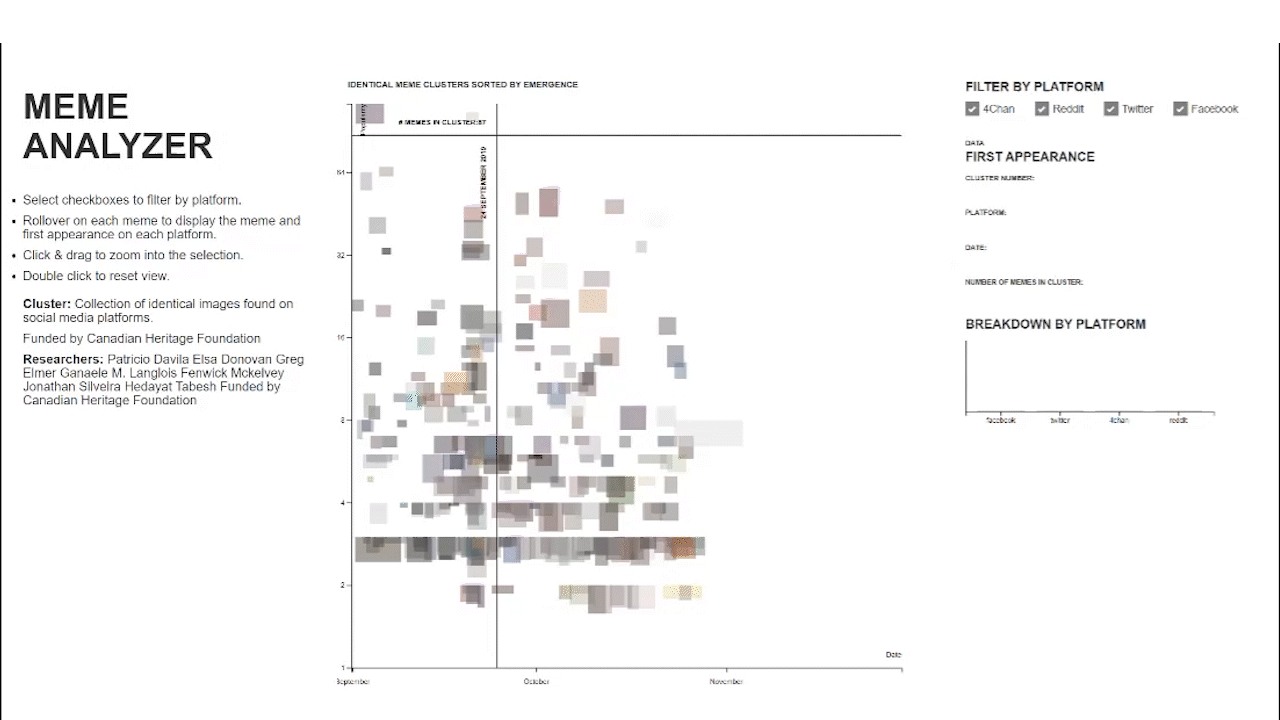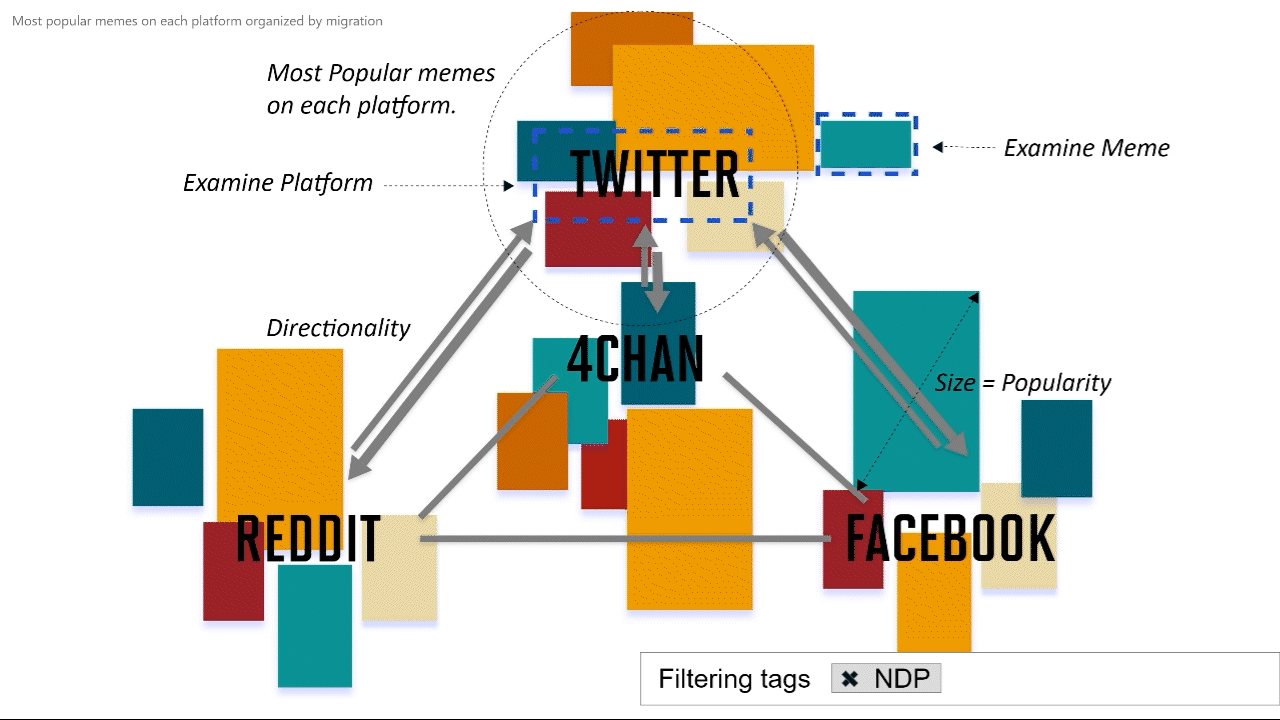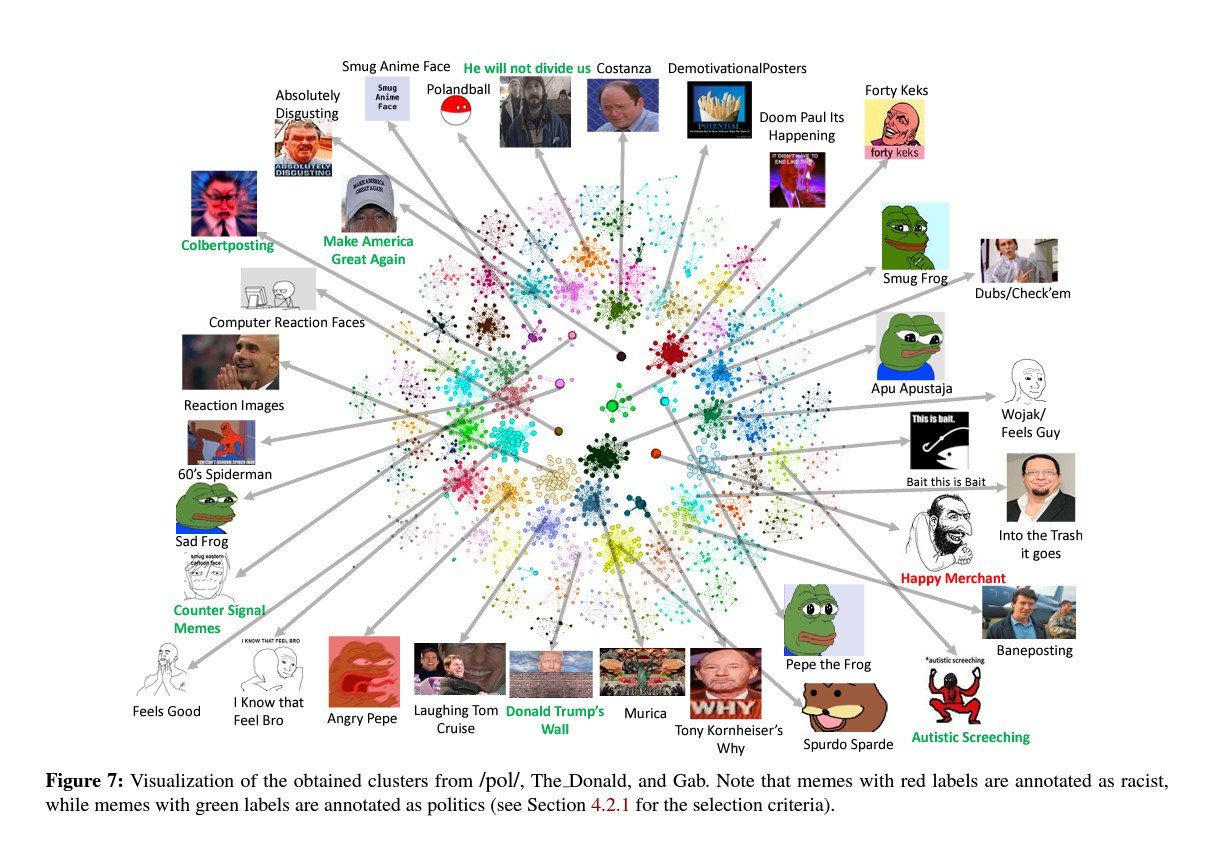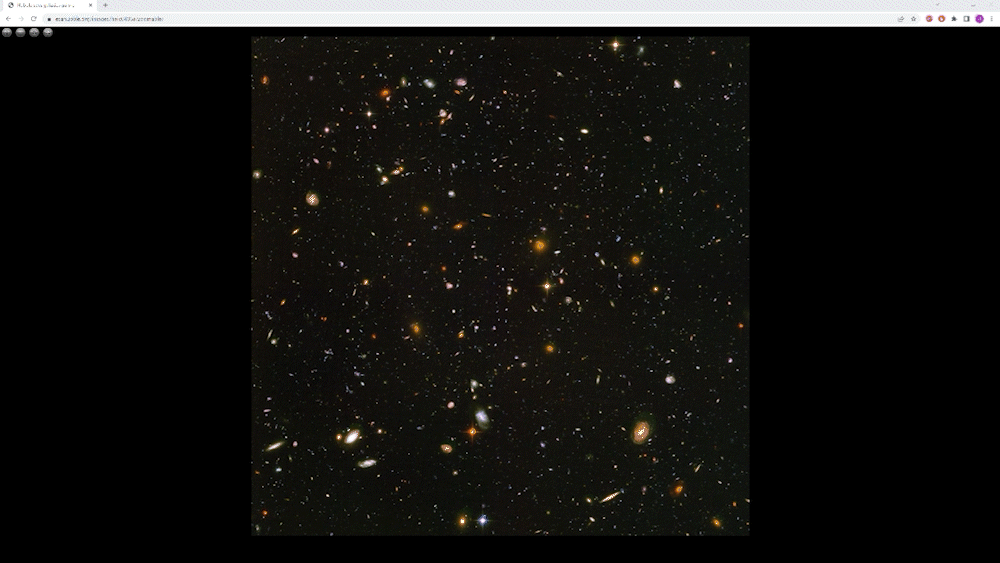Meme Analyzer, 2021,
Design & Data Visualization
Data Visualization, Meme Research
The Meme Analyzer is a tool that helps researchers visualize and extract data from a meme database, this project was a collaboration between the Digital Democracies Institute at Simon Fraser University and the Public Visualization Lab at York University. The Digital Democracies Institute developed a tool and database that uses machine learning to detect and track memes online. The database was populated by identifying similar memes (e.g. those that may share the same meme template) and identical memes (e.g. those that are exactly the same) and categorizing them into a reference database. The database required a front-end interface. As a graduate research assistant at the Public Visualization Lab, my role was to conceptualize visual features and tools that would assist researchers in organizing and accessing the archive. I also develop a preliminary prototype that serves as a starting point for future developments. The prototype visualization database would be used as a proof of concept prototype to apply for future research funding to develop the completed application.
The image database was labelled and categorized using CSV data. The visualization needs to be accessible to non-programmers and contain a variety of useable features that enables the user to organize the data to suit their research purposes. The goal was to create an interface that is able to extract a variety of information out of these data sets, identify trends or trace origins of changing memes or answer questions like “How does a meme change over time?” or “How does the platform affect the context of the meme”.
Role: Designer & Developer (Graduate Research Assistant)
Organization: Public Visualization Lab (York University)
Technology: D3.js, CSS, HTML, JavaScript, Adobe XD
Researching Image-based Research Papers
The first stage of this project was to identify what functions are required, and how researchers in the past examine images and produce data visualizations. The subject of the research papers was often focused on emergence and proliferation. There was also an interest in the dominant subject matter being posted and spread by online communities. The meme analyzer, using the archived, could track the spread and movement of memes across platforms. The ability to focus on temporal data could be insightful within meme research, used in combination with an API that monitors trending news topics, tracking memes that emerge in response to world events. The tool could also indicate the number of posts per user to identify the most active and influential communities or specific users. In the research papers and archives, there was an interest in the context and history of a meme, and an existing database like KnowYourMeme can help with this. The meme analyzer could include a feature that provides historical and contextual information, similar to a wiki.
Other research papers were also examined though they focused on examining features of images within databases not related to memes specifically, A short list of papers with research notes can be found at the bottom of this page.
Inspiration and Wireframe Prototype
The visualization and interface were inspired by esahubble.com’s zoomable image feature used to examine extremely large images taken from the Hubble telescope. The initial level will contain a broad scope of details of the platforms as the user focuses on a particular detail more specific information about the area will emerge. The top levels of the visualization would focus on the platform as a whole, containing general information regarding the most popular memes and directional arrows dictating how memes are migrating between platforms. Diving a bit deeper into each specific platform could reveal the migration of memes between subgroups or boards within the platform. The application would also examine individual meme variations using a timeline comparison to examine how a meme evolves over time or how it changes as it migrates into other social media applications. Additional features could include the number of images in the cluster when the images are posted, the platform and community posted etc. A UI prototype created in Adobe XD can be tested below.
The visualization was created in HTML, Javascript and D3.js. A small set of features were prioritized, based on the available time frame. I chose to focus on Identical meme clusters sorted by the first appearance on the platform and the emergence of variations seen on platforms. The images were processed for their average colour and size to assist with the visualization of the graph. The graph itself is organized by popularity and date. As the user hovers over a particular image additional information is presented such as the first appearance number of images in the cluster and a bar graph of where they are the most popular. Examples can be seen below available below.






